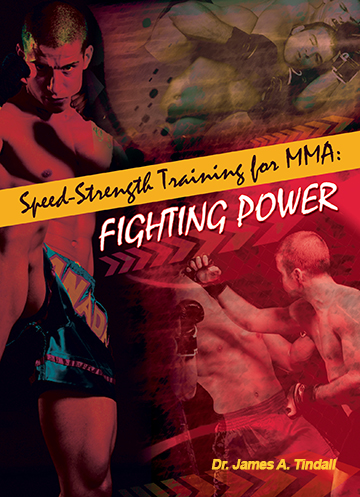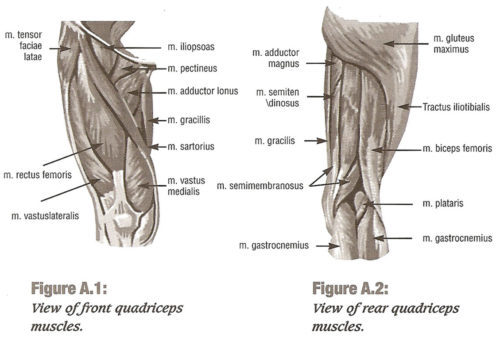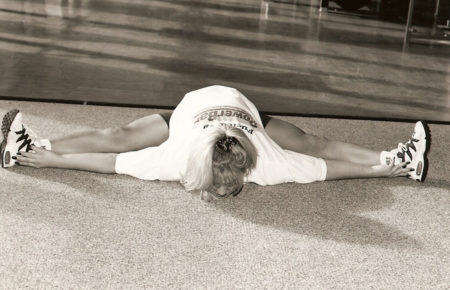When was the last time you stretched your muscles well? Stretching should be an integral part of any training program, whether you’re a bodybuilder, martial artist, pro-football athlete, or the average fitness buff. Too often, we spend all kinds of time on building those muscles, improving cardio, or burning calories, but at the same time, fail to really enhance our performance at all levels. Stretching will help you achieve that enhancement.
As the reader is aware, muscles of the body are both large and small. What is common among muscles, regardless of size is the parallel grouping of muscular bundles, i.e., fibers, cells, etc. While some individuals who are not very strong are quite flexible, greater flexibility can be gained with increased strength. To enhance muscle size, one needs to increase the number and thickness of the miofibrils and increase the length of the functional unit of the muscles cells. This unit is generally termed the sarcomeres. The sarcomeres can easily extend from a relaxed position, but also can contract. As the sarcomeres contract, actin and myosin, two kinds of protein, “lubricate” the cells as they slide or glide along each other in the contraction process. Each muscle will have a general resting length; its length when the body is at rest, but also a contraction length (as little as 70 percent of resting length) and a stretched length (as much as 130 percent of resting length). During contraction of a muscle, a force is applied; because myosin and actin decrease in overlap of each other during the lubrication process of stretching, this force will gradually diminish as the muscle is stretched and will drop to zero when the muscle reaches approximately 170-175 percent of the rested length.
Advertisement: Amazon (click on pic for more info)

In addition to the muscle, tendons play a major role in flexibility. Muscles are generally connected to other areas in the body by tendons and connective tissues. Tension that is generated during stretching is immediately transferred to connective tissues which are called collagen fibers. Collagen fibers are very strong but cannot contract and have a very small range of extension. These types of fibers are normally found in grouped bundles that surround the muscle and tendons at their attachment point and which, as stated, have little ability to extend. In fact, the tendon and collagen fibers can only extend safely about 3-4 percent. Any extension past this percentage point can cause severe injury, especially if you are older. Typically, these fibers are more pliable in young athletes compared to older athletes in whom they become relatively stiff. Unless the individual works at stretching type movements, he or she will become stiff. This can be observed in many older people in our society today. However, using a good stretching routine, older individuals can remain flexible their entire life. It is never too late to begin.
As you may guess, it is not only the muscle, but also the tendon and associated collagen fibers that need to be extended for greater flexibility, although relaxed is probably a better term to use than extended. To achieve a permanent elongation of the tendons and associated fibers, you should use long duration, but low tension (force) stretching exercises while the muscles and tendons are warmed up (100+ degrees) and maintain the stretch until the muscles and tendons have cooled down. For the types of warm down stretches, the muscles should always be at less tension than the tendons and connective fibers. Therefore, it is important to have strength for achieving greater flexibility. Also, as with working out, failure to move the muscle or joint through a full range of motion over a period as short as 2-3 weeks will restrict flexibility, especially in the joints because of chemical changes which occur in the collagen fibers.
In addition to the muscles, tendons, and collagen fibers, there are ligaments which hold joints in place. Ligaments are a little more elastic than tendons, but not much. While a tendon can stretch to only 3-4 percent before tearing, a ligament can stretch about six percent before tearing. An overstretch of the ligaments can lead to loose and therefore, weak joints, particularly if the muscle associated with the tendons and respective joint goes into atrophy (muscle deterioration due to little use). As the muscle reduces in size and strength through decreased use, the loose joint resulting from the stretched ligament will become more apparent at it destabilizes.
Let’s illustrate this to obtain a better understanding. The quadriceps muscles consist of 1) vastus lateralis, 2) vastus medials, 3) rectus femoris, and 4) vastus intermedus (figure A.1). However, you cannot neglect the muscles on the back of the leg (figure A.2). Many gym trainers recommend leg extension exercises to build up the front portion of the quadriceps. While all the quadriceps muscles are used to some extent, the vastus medials is the muscle performing most of the work, along with the rectus femoris in this exercise. Because most people customarily use heavy weights, it is what physical therapists would call an improper stretch because only one joint is being used (the knee). The knee becomes the fulcrum and all the weight load and associated stress is placed on the ligaments which hold the knee together. If the quadriceps muscles are kept strong through exercise, any damage done by stretching the ligament too much will likely not be noticed unless it is very severe. However, at the onset of atrophy in later years, the stretched ligaments will likely cause a loose joint which will become noticeable, painful, and annoying; also, osteoarthritis may set in. A better use for leg extensions is for rehabilitation, using very light weights, not over 20 pounds per leg. This would make it a true exercise and not a ligament stretch. It is not necessary to stretch the ligaments to be fully flexible.

At this point, I should also mention the function of the bones in being filled with marrow, is a living tissue. Bones are composed of calcium and phosphorus, attached cartilage, and collagen fibers. As greater stress is applied to a bone over long periods of time, such as with consistent workouts, the bone can become much stronger. However, too much stress, either by workout loads or over stretching, can weaken bones. Considering all the body parts involved in stretching, a balanced regimen of different types of stretches at the proper times should be sought for maximum flexibility results. A good source of reference is Dr. Tindall’s MMA book, which includes an entire chapter on stretching properly and various ways to achieve it.







